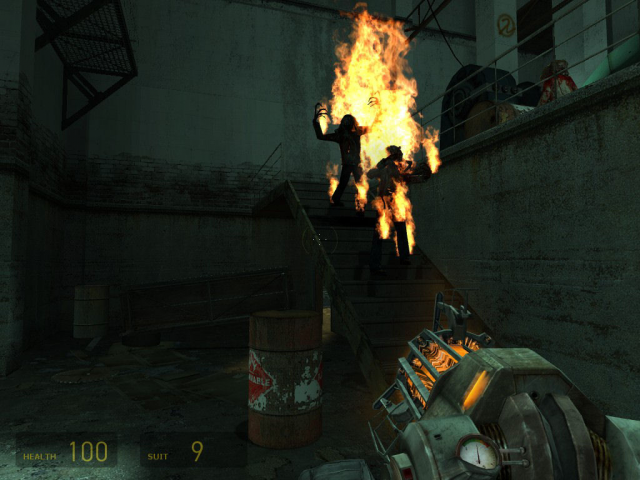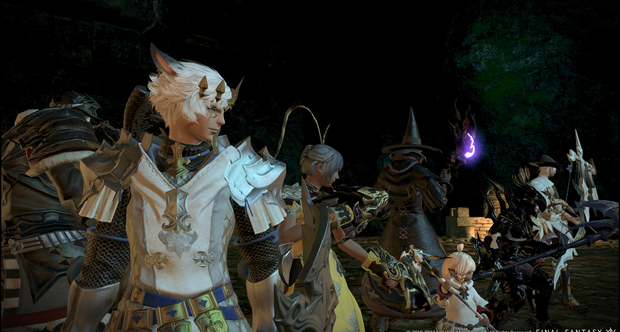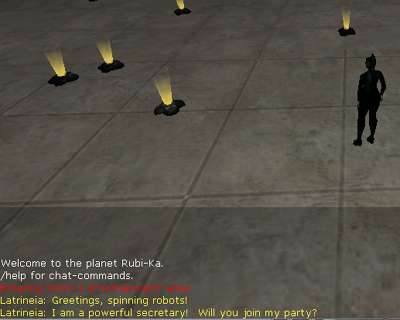Electronic Arts is the most recent publisher to run into serious problems with its online server architecture screwing up the launch of a new game, but it's definitely not the first. Throughout the last decade or so, plenty of game makers have seen otherwise promising games marred at their debut by early problems surrounding game and server performance. To refresh your memory, here are five of the most memorably screwed-up launch experiences to hit the PC.
Half-Life 2
Launch date: November 14, 2004

These days, Steam is the de facto way many of us get most of our PC games, and the system provides a generally good experience. But those around for its launch in 2004 remember it wasn't always this way. Even before the service launched alongside the long-delayed blockbuster release ofHalf-Life 2, there were plenty of people complaining about the onerous "permanent Internet connection" that would be required to play even single-player games on the service (though it's worth noting that an "offline mode" was available after the first authentication, even in those early days).
Despite weeks of pre-load downloads for online customers, when the game actually launched, the authentication servers for the retail version got hammered to the point of being useless for many customers. The BBC reported on the problems, noting the (then) new and unusual fact that "even gamers that only intend to play the game by themselves must authenticate their copy." Forum threadscomplained loudly about server overload preventing them from playing the game they purchased. As if that weren't enough, gamers who were able to play complained about graphical stuttering even on high-end systems (for the time).
Things calmed down rather quickly, though, as Valve increased its server capacity a few days after launch. Half-Life 2 went on to win pretty much every laudatory award the industry could throw at it, and Steam went on to dominate the world of digital game distribution. It just goes to show you that even successful services and games can sometimes get off to bumpy starts.
Final Fantasy XIV
Launch date: September 22, 2010

This wasn't so much a case of a problematic launch server as it was a launch of a fundamentally unfinished product. Things got off to a bad start even before the launch, when the public beta wasdelayed to fix "critical bugs." That beta was then cut short a month earlier than expected so Square Enix could, for some reason, rush to launch with a game still riddled with massive issues. PC Gamersummed up the issues in its 30/100 initial review.
Square publicly apologized and committed to fixing these major technical and gameplay issues, offering early players a 30-day free trial while it got things in order. But the publisher kept extendingthat trial as the game failed "to achieve the level of enjoyability that Final Fantasy fans have come to expect from the franchise," as the producer put it. Square Enix didn't feel comfortable charging for the game until January 6, 2012, more than a year after that bug-filled initial launch.
To Square's credit, they stuck with the game, slowly adding features and fixing problems with patches even as the title became a significant drag on their resources. The game is now being given the full relaunch treatment with A Realm Reborn, an overhaul that has just started closed beta and is already looking much better than the complete mess that doubled as the original game. The whole debacle seems to have been a humbling lesson for a company that probably figured that extending its popular single-player RPGs into the multiplayer world would be a lot easier.
World of Warcraft
Launch date: November 23, 2004

In the days after that launch, server queues routinely reached into the thousands, random disconnections were common, and latency issues famously trapped people in a "looting" animation for a half hour. Problems were still frequent by January 2005, when GameSpot reported that 20 of the game's 88 servers were offline for the Martin Luther King Jr. Day holiday weekend. Blizzard's Mike Morhaime publicly apologized for the problems and offered four days of free play time for the disruption (street value: about $1.50).
The server problems got so bad that Penny Arcade revoked their game of the year award for the title. "Every week, there is some new calamity that necessitates some huge response on their part, servers are coming down, but if you think that the servers coming back up again will represent an improvement in the basic functionality of the game you’re mistaken," the site wrote.
Blizzard seemed to learn its lesson quickly, and the game was much more stable as it saw extreme subscriber growth through 2005 and beyond. It went on to become the world's most popular MMO by a good margin for years to come. But to those who were there at the troubled start, those lofty heights seemed like a long, long way away.
Diablo III
Launch date: May 15, 2012

You'd think that Blizzard would have learned to over-budget for servers after the World of Warcraftlaunch issues, but the launch of the always-online Diablo III shows it didn't. As millions of players tried to log in on launch day, a good portion ran into the now-infamous "error 37" (or the related "error 73") before being booted back to the launch screen. Those who could get in often faced synchronization problems and random disconnects.
Blizzard initially downplayed the problem, but as Twitter, Facebook, and YouTube filled with over-the-top rage (not to mention countless jokes) about not being able to log in, Blizzard quickly offered a formal apology. "Despite very aggressive projections, our preparations for the launch of the game did not go far enough," the company said. "We're continuing to monitor performance globally and will be taking further measures as needed to ensure a positive experience for everyone."
Just when Blizzard thought the problems were behind them, servers were again hammered on May 31, when a new patch rollout led to widespread login errors yet again. By that point, many players had already given up on a game that by most accounts failed to live up to a decade of heightened expectations. Though the game still has a devoted following, the pain of that negative first impressions seems to have taken its toll.
Anarchy Online
Launch date: June 27, 2001

How bad was it? Something Awful's hilarious launch day write-up captures the battles with empty environments, low frame rates, constant lag, and frequent crashes:
Anarchy Online's problems weren't limited to empty gameplay servers—they extended to registration and billing as well. Players reported multiple registration confirmations, problems getting their credit cards to go through, and even issues with accepting the registration keys that came with the retail copies of the game (remember those?).
In a newsletter two weeks after the launch, Funcom apologized for what it called "some significant issues that our customers have been dealing with the last few days," while also trumpeting 35,000 registered accounts. The company also publicly asked the press to "hold back on a full review until we have solved these problems." This was a problem for many of the magazines that had already gone to print, but also for many websites that flat-out ignored the request and reviewed the game in its initial broken state.
While it took months for Funcom to get its prematurely released game into a playable state, the persistence seems to have paid off. Anarchy Online is now one of the longest-running MMOs still in service, and it has attracted millions of subscribers over its lifetime. While the launch disaster still gets mentioned, reviews of subsequent expansions are generally much more positive and forgiving of the early struggles. Will we be saying the same thing about SimCity in a decade's time?
Bonus console launch disaster: Sega Saturn
Launch date (US): May 11, 1995

Sega needed to make a splash with the Saturn after a string of hardware failures including the Sega CD and 32X (not to mention strange side projects like the Pico). That splash came at E3 1995 when the company announced that the Saturn, which at that point had been planned for a holiday release in the US, was already on shelves at four select retailers. It must have seemed like a good idea at the time; a way to cut off Sony's upstart PlayStation before it could even get off the ground. But the early release simultaneously angered the retail partners that didn't get early hardware and the third-party publishers that missed their chance to get in on the lucrative launch. Not to mention that the lineup of the six Sega-made games that came with the system didn't really set the world on fire (Clockwork Knight, anyone?).
The surprise launch also may have been too much of a surprise to consumers, who had been softened up by the kind of saturation advertising and point-of-purchase marketing that came along with the better-planned PlayStation launch. Speaking of which, Sony took a lot of the wind out of Sega's sails by getting up on stage immediately after the Sega press conference and announcing that the PlayStation would launch at $299—a full $100 less than the Saturn. Surprise!
Source:arstechnica.com
No comments:
Post a Comment